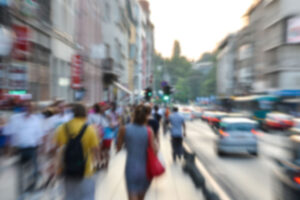By David Burr
“Nobody goes there anymore; it’s too crowded.” – Yogi Berra
The traditional behavior of automobile drivers heading into the city center and finding parking has led to an untenable level of traffic and congestion in many cities. Urban roadways are at or beyond capacity and, as cities become denser and populations increase, this problem will only get worse. Anyone who has driven in a dense urban environment is aware of this, yet still they come, despite knowing the headaches and the hassles of driving and parking in these urban areas. The solution, of course, is not fewer people, but fewer vehicles.
To achieve this decreased use of individual cars within city centers, cities need to ask themselves what motivates drivers to continue this behavior, and then tailor alternative transportation solutions that accommodate these needs when possible. By developing programs and policies that encourage pedestrianism and the use of alternative transportation, as well as accommodating bicycle and scooter traffic as supplementary forms of transit, cities can begin to get closer to reducing urban vehicle traffic while not impairing use and access, but rather enhancing it.
A natural consequence of striving for this solution is that transportation, particularly as people move in and out of metropolitan corridors on daily commutes, is becoming more intermodal. In order to operate efficiently and accommodate the needs of people traveling into and around dense urban areas, and back out to less dense suburban areas, transportation systems also need to offer options and fully leverage the various forms of existing infrastructure and high density transit options available to them.
To drive adoption and increase the use of these various forms of transport, it is important to understand them functioning not individually, but rather as separate links in a greater transportation “chain”. A chain…




